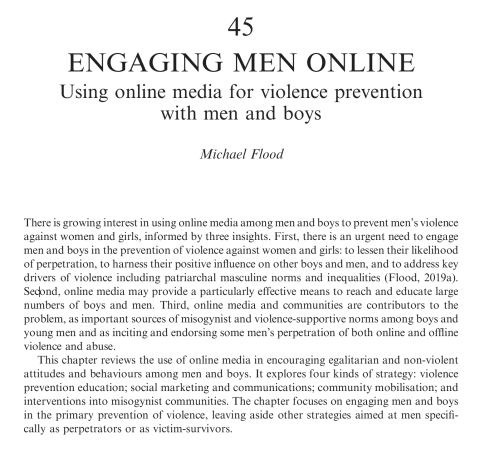
There is growing interest in using online media among men and boys to prevent men’s violence against women and girls, prompted by two insights. First, such media may be effective ways to reach and educate large numbers of boys and men. Organisations such as schools and universities involved in violence prevention education are turning increasingly to online media as platforms for education on violence, gender, and healthy relationships, using these to deliver curricula to large cohorts of students and others. Second, and in contrast, Internet communities are recognised as contributors to the problem – as important sources of misogynist and violence-supportive norms among boys and young men, and as inciting and endorsing some men’s perpetration of both online and offline forms of violence and abuse.
This chapter reviews the use of online media and communities in encouraging egalitarian and non-violent attitudes and behaviours among men and boys. It explores four kinds of strategy:
- Violence prevention education, including consent education and respectful relationships education;
- Social marketing and communications campaigns that use online media to shift social norms;
- Community mobilisation campaigns, including the White Ribbon campaign and other initiatives; and
- Interventions into misogynist communities and spaces.
The chapter describes and assesses each strategy: its key elements, emerging use, effectiveness, and challenges. The chapter concludes with recommendations for how best to lessen the online radicalisation of boys and men into misogynist ideologies and to make use of online media for violence prevention work with men and boys.
CITATION: Flood, M. (2023). Engaging Men Online: Using online media for violence prevention with men and boys. In The Routledge Companion on Gender, Media and Violence, Eds. K. Boyle and S. Berridge. Routledge, pp. 491-500.
Find the whole book here.